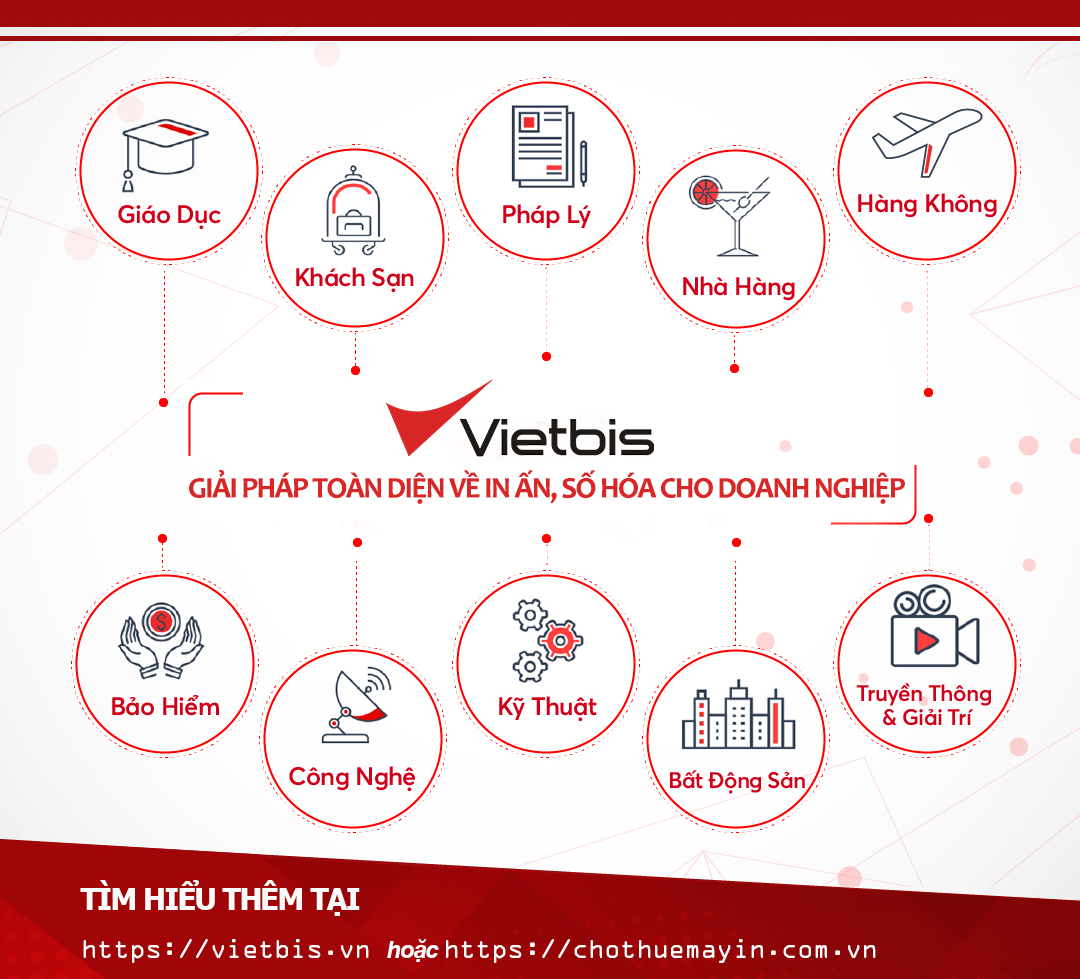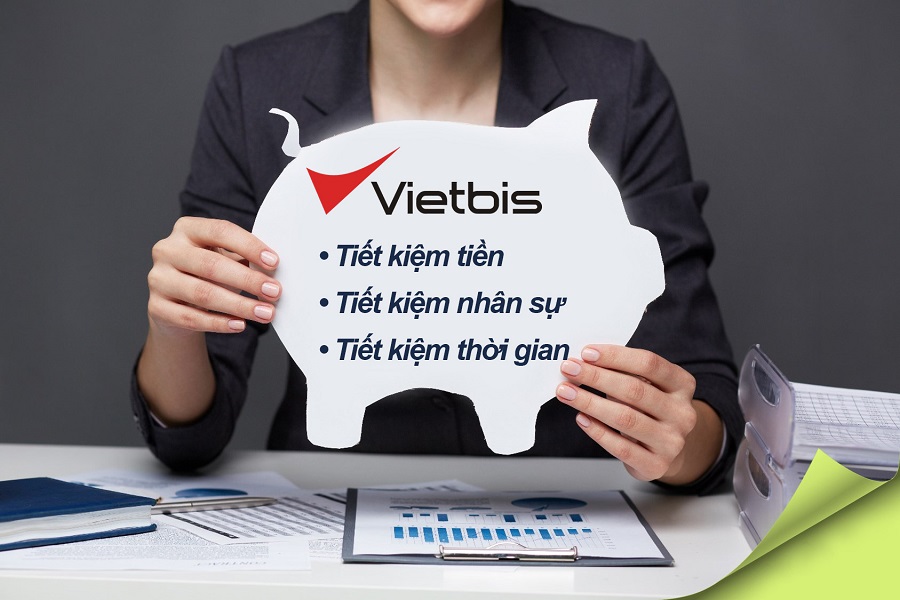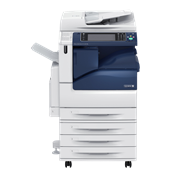1. Assets
Definition: Everything a company owns, including cash, accounts receivable (money a company is going to receive, see below), property and goods.
Mọi thứ mà một công ty sở hữu, bao gồm cả tiền mặt, các khoản phải thu (tiền mà một công ty sẽ nhận được), tài sản và hàng hóa.
Example: The company’s assets were easy to calculate, but it was difficult to quantify the value of the employees’ expertise.

2. Liabilities
Definition: Everything that a company owes to others, like loans and mortgages.
Tất cả các khoản nợ của công ty, bao gồm các khoản vay và thế chấp.
Example: Liabilities are recorded on the right side of the balance sheet, while assets are listed on the left.
3. Balance Sheet
Definition: A document that records a company’s assets and liabilities at a certain moment in time. If we’re talking about a public company, it also shows the shareholders’ equity (how much the shareholders own).
The balance sheet is based on the accounting equation:
- assets = liabilities + owner’s equity
- The balance sheet is important for potential investors because they can see how the company is doing.
Bảng cân đối kế toán thống kê tài sản và khoản nợ của công ty tại một thời điểm nhất định. Nếu chúng ta đang nói về một công ty lớn, Balance Sheet cũng cung cấp vốn sở hữu của cổ đông (bao nhiêu cổ đông sở hữu).
Bảng cân đối kế toán dựa trên phương trình kế toán:
- Tài sản = Nợ phải trả + Vốn sở hữu của chủ sở hữu
- Bảng cân đối kế toán rất quan trọng đối với các nhà đầu tư tiềm năng vì họ có thể thấy công ty đang hoạt động như thế nào.
Example: We studied the balance sheet carefully to see if the assets exceeded the liabilities and shareholders’ equity.
4. Debit
Definition: An entry that shows what a company spends. Debits are recorded on the left side of an account.
Một mục cho thống kê những khoản công ty chi tiêu. Debits được ghi ở bên trái của tài khoản trong bảng cân đối kế toán.
Example: She recorded the purchase of the new laptops as a debit entry.
5. Credit
Definition: An entry that shows how much money a company receives. Credits are recorded on the right side of accounts.
Mục ghi lại số tiền mà công ty thu được. Credit được ghi lại ở bên phải của tài khoản trong bảng cân đối kế toán.
Example: She realized that the total debits didn’t equal the total credits, so she had to check each entry all over again.
6. Double Entry
Definition: An accounting system in which each transaction is recorded as both a credit and a debit, an asset, and a liability.
Một hệ thống kế toán mà trong đó mỗi giao dịch được ghi nhận dưới dạng tín dụng và ghi nợ, tài sản và khoản nợ.
Example: Double entry bookkeeping gives you a better perspective than single entry bookkeeping because it helps you make sure each transaction is accurately recorded.
7. Net
Definition: An amount of money that is left after taxes have been paid.
Số tiền còn lại sau khi đã trả thuế
Example: She couldn’t tell me her net salary because she didn’t know all the taxes she was paying; moreover, salaries are not transparent in her company.
8. Gross
Definition: An amount of money before taxes are deducted.
Số tiền trước khi được khấu trừ thuế.
Example: Her gross income exceeded his, but they still couldn’t afford to get the house they’d been dreaming about for such a long time.
9. Profit
Definition: The money a business is left with after deducting all the expenses.
Số tiền lãi mà một doanh nghiệp nhận được sau khi khấu trừ tất cả các chi phí.
Example: In order to decide if the company was worth investing in, they wanted to look at the profit it had been making over the previous year.
10. Revenue
Definition: The total amount of money a company receives from the services or products it sells. The revenue is higher than the profit, because in order to calculate the profit, you need to first see the costs of doing business.
Tổng số tiền mà một công ty nhận được sau khi bán các dịch vụ hoặc sản phẩm. Doanh thu thường cao hơn lợi nhuận, bởi vì để tính lợi nhuận, trước tiên bạn cần xem xét lại các khoản chi phí kinh doanh.
Example: Our company has experienced a decrease in revenue due to the financial crisis.
☼ Tham khảo: Số hóa tài liệu kế toán doanh nghiệp

11. Capital
Definition: Cash and funds, but also machinery and tangible assets that can contribute to earning more money, like computers, company vehicles, etc. Intangible assets like expertise or reputation are not considered to be capital.
Bao gồm tiền mặt và quỹ, đồng thời tất cả các cơ sở vật chất, máy móc và tài sản hữu hình đóng góp trong quá trình vận hành của công ty. Các loại tài sản vô hình như chuyên môn hoặc danh tiếng không được coi là vốn.
Example: He couldn’t start a business because he didn’t have enough capital, so he decided to work as a freelancer for the time being.
12. Cash Flow
Definition: Money coming in (inflows) and going out (outflows) of a company.
Dòng tiền của công ty bao gồm lương tiền đến (inflows) và đi (outflows).
Example: They had a cash flow problem because only a small percentage of their customers decided to use early settlement discounts, which meant that they had very high financing costs.
13. Payroll
Definition: A list of all a company’s employees and their salaries. The word payroll also refers to the total amount of money paid by a company to its employees.
Danh sách tất cả nhân viên của công ty và lương của họ. Từ biên chế lương thưởng cũng đề cập đến tổng số tiền mà công ty trả cho nhân viên của mình.
Example: They have a lot of employees on their payroll, so they employ quite a few payroll accountants to calculate employee earnings.
14. Accounts Payable
Definition: Money that a company owes to other parties—companies or people—called creditors. Accounts payable are considered liabilities.
Khoản tiền mà một công ty nợ cho các bên khác (có thể là doanh nghiệp hoặc cá nhân – được gọi là chủ nợ).
Example: All of the accounts payable need to be cleared before we can invest in new software.
15. Accounts Receivable
Definition: Money that a company has to receive for products or services bought by customers or clients.
Số tiền mà một công ty đã nhận được từ các sản phẩm hoặc dịch vụ được khách hàng mua.
Example: You can calculate the accounts receivable by adding up all the invoices the company generated.
16. Appreciation
Definition: The increase in the value of a company’s assets. Appreciation can be the result of an increase in demand for a product or service. The verb form is to appreciate.
Sự gia tăng giá trị tài sản của một công ty. Appreciation có thể là kết quả của sự gia tăng nhu cầu về một sản phẩm hoặc dịch vụ. Hình thức động từ là appreciate.
Example: Although their balance sheet didn’t look very promising, the company seemed worth investing in because of an anticipated appreciation in the value of their product.
17. Depreciation
Definition: The decrease in the value of products or services a company offers. Depreciation can be due to a high supply of similar products or services offered by competitors. The verb form is to depreciate.
Sự khấu hao giá trị của sản phẩm hoặc dịch vụ mà công ty cung cấp. Khấu hao có thể là do nguồn cung cao của các sản phẩm hoặc dịch vụ tương tự do các đối thủ cạnh tranh cung cấp. Hình thức động từ là để depreciate.
Example: Because the company had almost no competitors just a year ago, nobody would have thought that their products would depreciate so much.
18. Overhead
Definition: All the expenses a company needs to pay for, like the costs of advertising, labor, bills, and taxes.
Tất cả các chi phí mà một công ty cần phải trả, như chi phí quảng cáo, lao động, hóa đơn và thuế.
Example: Their overhead expenses were so high that they had been making very little profit, so they decided to cut back on marketing.
19. Accounting Period
Definition: The time period over which financial statements are produced, usually a year.
Khoảng thời gian mà báo cáo tài chính được hoàn thành, thường là một năm.
Example: The accounting period the investors were interested in was longer than a financial year because they wanted to get the big picture of the company’s profitability.
☼ Tham khảo: Giảm 3% chi hàng năm nhờ giải pháp in ấn tối ưu

20. Financial Statements
Definition: Documents that show the financial situation of a company. They include the balance sheet (showing assets, liabilities and shareholders’ equity, see above), the income statement (showing revenues and expenses) and the statement of cash flows (showing cash flow fluctuations in a certain accounting period).
Tài liệu thống kê tình hình tài chính của công ty, bao gồm bảng cân đối kế toán (hiển thị tài sản, nợ và cổ phần của cổ đông), báo cáo thu nhập (hiển thị doanh thu và chi phí) và báo cáo dòng tiền (cho thấy biến động dòng tiền trong một kỳ kế toán nhất định).
Example: The accountants were all busy working on the financial statements as the company was planning to refinance its loans.
21. Share
Definition: A unit of ownership in a company. The person or organization who owns shares (the shareholder, see below) is entitled to dividends (usually cash), but they also share the responsibility if there are losses.
Một đơn vị cổ phần của công ty. Những cá nhân hoặc tổ chức có thể sở hữu cổ phần – cổ đông sẽ được hưởng cổ tức (thường là tiền mặt), nhưng họ cũng chia sẻ trách nhiệm nếu doanh nghiệp có tổn thất.
Example: He decided to invest in shares of a very profitable company instead of considering a savings account because he was sure he could make money fast and he enjoyed taking risks.
22. Shareholder
Definition: A person or organization (company or any other institution) that owns shares in a company. Shareholders are, in a way, the owners of a company. If the company is doing well, the value of the shares goes up. If, on the contrary, the company is not profitable, the value of its shares decreases.
Một cá nhân hoặc tổ chức sở hữu cổ phần trong công ty. Nếu công ty hoạt động tốt, giá trị cổ phiếu tăng lên. Nếu ngược lại, công ty không có lãi, giá trị cổ phiếu của công ty sẽ giảm.
Example: Because he was a shareholder in the company, he had to attend Annual General Meetings in order to keep up with the latest news and to vote for new members of the Board of Directors.
23. Owner’s Equity
Definition: A part of a company’s assets that the owner has. It’s calculated as assets minus liabilities.
Một phần tài sản của công ty mà chủ sở hữu có. Nó được tính là tài sản trừ đi nợ.
Example: Unfortunately, in his company’s case, the owner’s equity didn’t amount to much: they had a lot of liabilities and not enough assets.
24. Auditor
Definition: A person whose job is to evaluate accounting records in order to make sure they have been done properly and to check if the company is being run efficiently.
Kiểm toán là người đánh giá hồ sơ kế toán để đảm bảo rằng nó đã được thực hiện đúng chuẩn và để kiểm tra xem công ty có đang hoạt động hiệu quả hay không.
Example: When the auditors asked for additional information about the financial statements, our accountants complied without delay.
25. Accountant
Kế toán có nhiệm vụ quản lý sổ sách kế toán để đảm bảo rằng các giao dịch tài chính được ghi chép một cách đúng đắn và hợp lệ. Bộ phận kế toán sẽ theo dõi doanh thu và chi phí phát sinh trong kỳ để đảm bảo rằng doanh nghiệp không gặp vấn đề về tiền mặt. Trong doanh nghiệp cỡ nhỏ, bộ phận kế toán thường kiêm luôn cả việc quản lý các phương thức ghi chép sổ sách.
26. Bookkeeper
Definition: A person whose job is to record daily transactions, issue invoices and complete payrolls. Bookkeepers are usually supervised by accountants. Bookkeepers are required to have less experience than accountants and don’t need a degree in accounting.
Là người ghi lại các giao dịch hàng ngày, phát hành hóa đơn và hoàn thành bảng lương dưới giám sát bởi kế toán. Bookkeeper thường có ít kinh nghiệm hơn kế toán và không cần bằng cấp về kế toán.
Hay nói cách khác, ‘accounting’ là một bộ phận chịu trách nhiệm tất cả các vấn đề liên quan đến tình hình tài chính của doanh nghiệp. Khái niệm ‘bookkeeping’ có hơi khác một chút so với ‘accounting’ bởi nó chỉ chịu trách nhiệm về các giao dịch tài chính diễn ra hằng ngày. ‘Bookkeeping’ đơn thuần là một phương pháp để ghi chép lại tất cả các giao dịch tài chính lên sổ sách để thông tin về các giao dịch thường ngày được chuyển đến cho bộ phận kế toán. ‘Bookkeeping’ không chịu trách nhiệm về vấn đề phân tích sổ sách kế toán hay hiểu về thuế hoặc những vấn đề tài chính quan trọng khác.
Example: She was training to become an accountant, but in the meantime, she had a part-time job as a bookkeeper.
27. Income Tax
Definition: Money that individuals and companies owe to the government, based on the income they make.
Thuế cá nhân là tiền thuế mà các cá nhân và công ty phải trả cho chính phủ, dựa trên thu nhập họ kiếm được.
Example: She was a sole proprietor and she hired an accountant to file her income tax return every year.
28. Return on Investment (ROI)
Definition: The profitability ratio of a certain investment. The return on investment is calculated as the benefit gained from the investment divided by the cost of the investment.
Là tỷ suất sinh lời của một khoản đầu tư nhất định được tính bằng lợi ích thu được từ khoản đầu tư chia cho chi phí đầu tư.
Example: As their return on investment hit the lowest point in the last 5 years, they decided to stop investing in our company.
29. Dividends
Amounts paid from profits of a corporation to shareholders as a return on their investment in the stock of the entity.
Khoản chi trả từ lợi nhuận của một công ty cho các cổ đông như một lợi tức đầu tư của họ vào các cổ phiếu của của công ty đó.
Example: A company’s net profits are an important factor in determining a dividend.

30. Expenses
The costs incurred in producing revenues.
Các chi phí phát sinh để tạo ra doanh thu.
Example: If a business owner schedules a carpet cleaner to clean the carpets in his office and the cleaner invoices the company for the service, a company using a cash basis records the expense when it pays the invoice.
31. Breakdown
The process of dividing the cost of something into the different parts that make up the total amount, according to who is doing the work, what materials are needed, etc
Quy trình phân chia chi phí của một thứ gì đó thành các phần khác nhau tạo nên tổng số tiền, theo ai đang thực hiện công việc, vật liệu nào cần thiết, v.v.
32. Equity
Equity is the ownership of any asset after any liabilities associated with the asset are cleared.
Vốn chủ sở hữu là quyền sở hữu bất kỳ tài sản nào sau khi mọi khoản nợ liên quan đến tài sản đó được xóa
Example: For example, if you own a car worth $25,000, but you owe $10,000 on that vehicle, the car represents $15,000 equity. It is the value or interest of the most junior class of investors in assets
33. Drawing
A drawing account is an accounting record maintained to track money withdrawn from a business by its owners. A drawing account is used primarily for businesses that are taxed as sole proprietorships or partnerships. Owner withdrawals from businesses that are taxed as separate entities must generally be accounted for as either compensation or dividends.
Tài khoản bản vẽ là một hồ sơ kế toán được duy trì để theo dõi số tiền mà chủ sở hữu của nó rút ra từ một doanh nghiệp. Tài khoản bản vẽ được sử dụng chủ yếu cho các doanh nghiệp bị đánh thuế là công ty hợp danh hoặc công ty hợp danh duy nhất. Các khoản rút tiền của chủ sở hữu từ các doanh nghiệp bị đánh thuế là các thực thể riêng biệt thường phải được tính vào khoản bồi thường hoặc cổ tức.
34. Fixed cost
A fixed cost is an expense that does not change as production volume increases or decreases within a relevant range.
Chi phí cố định là một khoản chi không đổi của công ty bất kể việc sản phẩm của công ty là nhiều hay ít.
Example: For example, building rent is a fixed cost that management negotiates with the landlord based on how much square footage the business needs for its operations. If management decides to rent a 10,000 square feet manufacturing plant at $50 a square foot, the rent will be $50,000 a month regardless of how many units the factory actually produces. The plant could produce 10 units or 50,000 units. The rent will always be the same because it’s a fixed cost.
35. Variable Cost
A variable cost is a cost that changes in relation to variations in an activity. In a business, the “activity” is frequently production volume, with sales volume being another likely triggering event. Thus, the materials used as the components in a product are considered variable costs, because they vary directly with the number of units of product manufactured.
Chi phí biến đổi là chi phí thay đổi liên quan đến các biến thể trong một hoạt động. Trong một doanh nghiệp, “hoạt động” thường là khối lượng sản xuất, với khối lượng bán hàng là một sự kiện có khả năng kích hoạt khác. Do đó, các nguyên vật liệu được sử dụng như các thành phần trong một sản phẩm được coi là chi phí biến đổi, bởi vì chúng thay đổi trực tiếp theo số lượng đơn vị sản phẩm được sản xuất.
36. Loan
An amount of money that is borrowed, often from a bank, and has to be paid back, usually together with an extra amount of money that you have to pay as a charge for borrowing
Một khoản tiền được vay, thường là từ ngân hàng và phải được trả lại, thường cùng với một khoản tiền bổ sung mà bạn phải trả như một khoản phí khi đi vay
37. Accruals
Accruals are revenues earned or expenses incurred which impact a company’s net income on the income statement, although cash related to the transaction has not yet changed hands. Accruals also affect the balance sheet, as they involve non-cash assets and liabilities.
Các khoản phải trả là doanh thu kiếm được hoặc chi phí phát sinh ảnh hưởng đến thu nhập ròng của công ty trên báo cáo kết quả hoạt động kinh doanh, mặc dù tiền mặt liên quan đến giao dịch vẫn chưa được chuyển nhượng. Các khoản phải trả cũng ảnh hưởng đến bảng cân đối kế toán, vì chúng liên quan đến các tài sản và nợ phải trả không dùng tiền mặt.
38. The Costs of good sold
Cost of goods sold is the accounting term used to describe the expenses incurred to produce the goods or services sold by a company. … Examples of what can be listed as COGS include the cost of materials, labour, the wholesale price of goods that are resold, such as in grocery stores, overhead, and storage.
Giá vốn hàng bán là thuật ngữ kế toán được sử dụng để mô tả các chi phí phát sinh để sản xuất hàng hóa hoặc dịch vụ được bán bởi một công ty. … Ví dụ về những gì có thể được liệt kê là giá vốn hàng bán bao gồm chi phí vật liệu, nhân công, giá bán buôn của hàng hóa được bán lại, chẳng hạn như trong cửa hàng tạp hóa, chi phí chung và lưu trữ.
39. Profit margin
The percentage figure indicates how many cents of profit the business has generated for each dollar of sale. For instance, if a business reports that it achieved a 35% profit margin during the last quarter, it means that it had a net income of $0.35 for each dollar of sales generated.
Con số phần trăm cho biết doanh nghiệp đã tạo ra bao nhiêu xu lợi nhuận cho mỗi đô la bán hàng. Ví dụ: nếu một doanh nghiệp báo cáo rằng họ đã đạt được tỷ suất lợi nhuận 35% trong quý trước, điều đó có nghĩa là doanh nghiệp đó có thu nhập ròng là 0,35 đô la cho mỗi đô la doanh thu được tạo ra
40. Net income
Net income — also referred to as net profit, net earnings or the bottom line — is the amount an individual earns after subtracting taxes and other deductions from gross income. For a business, net income is the amount of revenue left after subtracting all expenses, taxes and costs.
Thu nhập ròng – còn được gọi là lợi nhuận ròng, thu nhập ròng hoặc lợi nhuận cuối cùng – là số tiền mà một cá nhân kiếm được sau khi trừ thuế và các khoản khấu trừ khác khỏi tổng thu nhập. Đối với một doanh nghiệp, thu nhập ròng là số doanh thu còn lại sau khi trừ đi tất cả các chi phí, thuế và phí tổn.

41. Net Loss
The excess of expenses over revenues. All expenses are included in this calculation, including the effects of income taxes.
Sự vượt chi so với thu. Tất cả các chi phí được bao gồm trong tính toán này, bao gồm cả ảnh hưởng của thuế thu nhập. Ví dụ, doanh thu 900.000 đô la và chi phí 1.000.000 đô la dẫn đến lỗ ròng 100.000 đô la.
Example: For example, revenues of $900,000 and expenses of $1,000,000 yield a net loss of $100,000.
42. Inventory
Inventory refers to all the items, goods, merchandise, and materials held by a business for selling in the market to earn a profit. Example: If a newspaper vendor uses a vehicle to deliver newspapers to the customers, only the newspaper will be considered inventory. The vehicle will be treated as an asset.
Khoảng không quảng cáo đề cập đến tất cả các mặt hàng, hàng hóa, vật liệu được một doanh nghiệp nắm giữ để bán trên thị trường nhằm kiếm lợi nhuận. Ví dụ: Nếu một người bán báo sử dụng xe để giao báo cho khách hàng, thì chỉ có tờ báo đó được coi là hàng tồn kho. Phương tiện sẽ được coi như một tài sản.
43. Liquidity
The degree to which an asset can be quickly bought or sold in the market at a price reflecting its intrinsic value. …
Example: For example, if a person wants a $1,000 refrigerator, cash is the asset that can most easily be used to obtain it.
44. Present value
Present value takes into account any interest rate an investment might earn.
Example: For example, if an investor receives $1,000 today and can earn a rate of return 5% per year, the $1,000 today is certainly worth more than receiving $1,000 five years from now
45. Receipt
The receipt is defined as to accept something given to you or is a record of money being received. An example of a receipt is when someone hands you a box of chocolates and you take it. An example of receipt is a paper you get at the supermarket listing your groceries and what you paid for them.
A receipt is defined as to accept something given to you or is a record of money being received. An example of a receipt is when someone hands you a box of chocolates and you take it. An example of receipt is a paper you get at the supermarket listing your groceries and what you paid for them.
46. Income statement
Shows their profit and loss over a period of time.
Example: Cho thấy lãi và lỗ của họ trong một khoảng thời gian.
47. Trial balance
The trial balance is a report run at the end of an accounting period, listing the ending balance in each general ledger account. … For example, an accounts payable clerk records a $100 supplier invoice with a debit to supplies expense and a $100 credit to the accounts payable liability account.
Example: Số dư thử nghiệm là một báo cáo được chạy vào cuối kỳ kế toán, liệt kê số dư cuối kỳ trong mỗi tài khoản sổ cái. … Ví dụ, một nhân viên tài khoản phải trả ghi một hóa đơn nhà cung cấp 100 đô la với ghi nợ chi phí cung cấp và ghi có 100 đô la cho tài khoản nợ phải trả tài khoản.
48. Certified Public Accountant
A certified public accountant (CPA) must meet education, work, and examination requirements—including holding a bachelor’s degree in business administration, finance, or accounting, and completing 150 hours of education.
Kế toán viên công được chứng nhận (CPA) phải đáp ứng các yêu cầu về giáo dục, công việc và thi cử — bao gồm cả việc có bằng cử nhân về quản trị kinh doanh, tài chính hoặc kế toán và hoàn thành 150 giờ giáo dục.
49. Income tax
The money the government takes out of your earnings in order to pay for government operations and programs. Fifteen percent of your income deducted from your paycheck and paid to the government to maintain the military and social welfare programs is an example of income tax.
Example: Số tiền mà chính phủ lấy ra từ thu nhập của bạn để trả cho các hoạt động và chương trình của chính phủ. Mười lăm phần trăm thu nhập của bạn được khấu trừ từ tiền lương của bạn và trả cho chính phủ để duy trì các chương trình phúc lợi xã hội và quân sự là một ví dụ về thuế thu nhập.
50. Budget
A formal statement of estimated income and expenses based on future plans and objectives. In other words, a budget is a document that management makes to estimate the revenues and expenses for an upcoming period based on their goals for the business.
Là một báo cáo chính thức về thu nhập và chi phí ước tính dựa trên các kế hoạch và mục tiêu trong tương lai. Nói cách khác, ngân sách là một tài liệu mà ban giám đốc lập để ước tính doanh thu và chi phí cho một giai đoạn sắp tới dựa trên các mục tiêu của họ đối với doanh nghiệp.
---------------
VIETBIS - Đơn vị hàng đầu về dịch vụ máy văn phòng. Chúng tôi cung cấp giải pháp tiết kiệm chi phí văn phòng cho hàng chục ngàn doanh nghiệp tại Hà Nội và khu vực miền Bắc:
☼ Hotline: 024 7303 1068 / 0971 491 492








